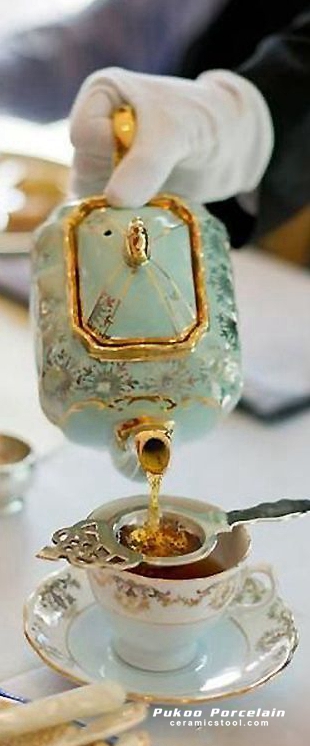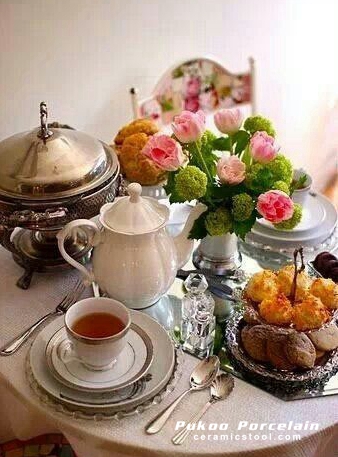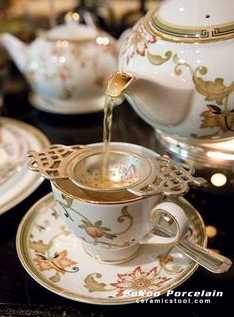 The beauty of English fine bone china is in its translucence. Light passes through it and gives it a delicate look, no matter the actual thickness of the piece. This property is unaffected by the process of glazing. Glazing adds a protective layer to the bone china, but it can also be used as a decorative element. There are two basic types of glaze applied to bone china. Glaze can be either glossy or matte.
The beauty of English fine bone china is in its translucence. Light passes through it and gives it a delicate look, no matter the actual thickness of the piece. This property is unaffected by the process of glazing. Glazing adds a protective layer to the bone china, but it can also be used as a decorative element. There are two basic types of glaze applied to bone china. Glaze can be either glossy or matte.
Glossy glazes reflect a large amount of light in one direction. They appear to be very shiny and bright. The reason for this appearance is because they are made with silica sand. It melts into a glass during the kiln firing process and forms a bonding layer with the bone china piece. The glassy appearance continues to the surface of the glaze and this produces the shiny appearance.

The matte appearance of a glaze makes it no less effective than the glossy type. The same protective glass layer is formed during firing. The difference is the size of particles and their effect on the light hitting the piece. Matte glazes are made of microscopically larger pieces of silica sand that scatter the light when it touches them. While there are larger particles in the glaze, this does not mean the outside of the piece will feel rough to the touch. The same smooth feel of a glossy glaze is evident in matte glazes. Sometimes, depending on the type of matte glaze used, they may feel smoother to the touch than glossy glazes.
Bone china is a keepsake item that will be cherished for many years, even decades. The correct finish, either matte or glossy, is an important choice. People who wish to purchase an expensive bone china set should explore all finishing options to find the perfect one for their needs.

